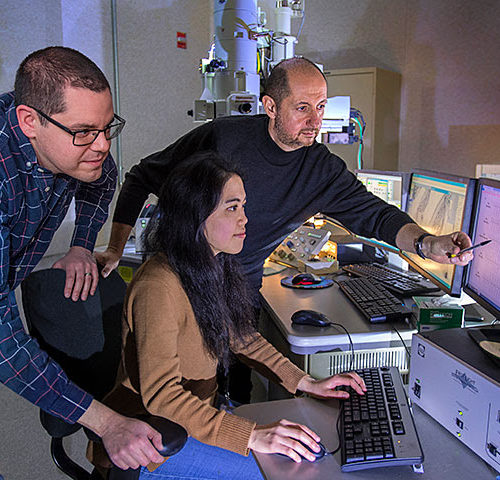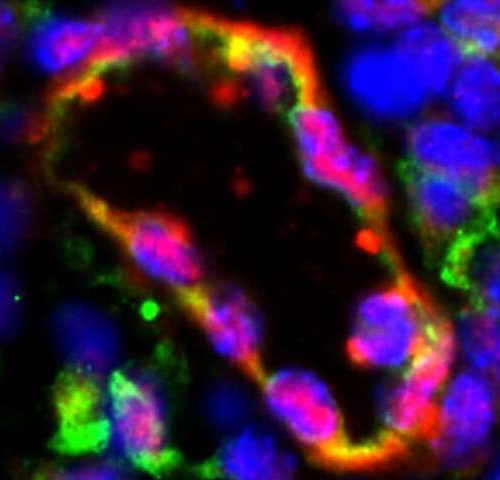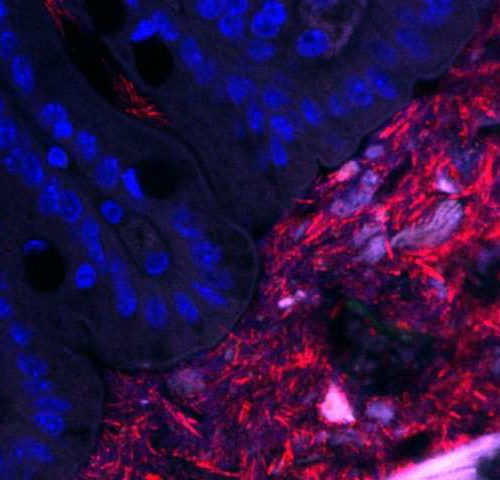Scientists designed a tunable peptide-like molecular coating that enables 3-D DNA nanostructures to maintain their structural integrity and functionality in different physiological environments relevant to drug delivery and other biomedical applications. Scientists have designed and synthesized chains of molecules with a precise sequence and length to efficiently protect 3-D DNA nanostructures from structural degradation under...
GREEN GLOW SHOWS CHANGES IN GENE EXPRESSION
JEFF FALK-RICE UNIVERSITYRICE UNIVERSITY A new, versatile gene signal amplifier can do a better job of detecting the expression of target genes than current methods, researchers report. Ultimately, the researchers hope the two-module system will simplify the diagnosis of diseases like Alzheimer’s, diabetes, and some cancers characterized by distinctive patterns of protein expression. They say...
Scientists uncover a mechanism that could lead to new immunotherapies head and neck cancer
by Katie Pence, University of Cincinnati Researchers at UC have discovered a previously unknown mechanism that could explain the reason behind decreased immune function in cancer patients and could be a new therapeutic target for immunotherapy for those with head and neck cancers. The authors share these findings in an article published in the journal...
Tracking down ‘illegal parkers’ in cancer cells
by Kristian Lozina, University of Würzburg Squamous cell carcinoma is a very unusual type of cancer. It occurs in many tissues—for example in the lungs, esophagus, pancreas, throat and pharynx, and on the skin. Due to the many mutations in this type of cancer, treatment is a particularly challenging task for medicine. However, all squamous...
Study shows promising approach for the prevention and cure of gonorrhea in women
by Nationwide Children’s Hospital In research recently published in mBio, researchers from the Abigail Wexner Research Institute (AWRI) at Nationwide Children’s Hospital and Griffith University’s Institute for Glycomics have discovered non-antibiotic (host-targeted) therapies for the effective treatment of Neisseria gonorrhoeae infections by repurposing existing drugs. Gonorrhoea is the second most commonly reported sexually transmitted infection...
Long-term hemophilia treatment could lie in patients’ own cells
by Nancy Fliesler, Children’s Hospital Boston Children (and adults) with hemophilia are slow to form blood clots, so are at constant risk for uncontrolled bleeding. Even when the skin isn’t broken, a fall or a simple toe stub can become a serious medical issue: internal bleeding cause permanent damage to muscles and joints. While regularly...
The importance of research that links autism and the gut
by Elisa Hill, Ashley Franks and Sonja McKeown, The Conversation Many people will associate autism with traits including atypical social interactions, repetitive behaviors, and difficulties with speech and communication. But perhaps lesser known is the fact people with autism are more likely to experience gastrointestinal disorders than the general population. One review found children with...
Certain combinations of cardiovascular drugs may reduce dementia risk
by Jenesse Miller, University of Southern California Specific combinations of statins and antihypertensives may also reduce risk for Alzheimer’s disease, according to a new USC study of nearly 700,000 Medicare beneficiaries. The findings suggest that treatments already in use for blood pressure and cholesterol control could reduce the number of people with Alzheimer’s and related dementias,...
Mapping bacterial neighborhoods in the gut
by Lori Dajose, California Institute of Technology Bacteroides fragilis (red) and the epithelial surface (blue) of a mouse colon. Most bacteria are found in the center of the gut lumen, but some reside deep within colonic crypts—little cave-like inclusions within the lining of the gut. Credit: Gregory Donaldson The microscopic populations of bacteria in our...
Virtual reality shows promise for early detection of multiple sclerosis balance problems
by University of North Carolina at Chapel Hill School of Medicine People with multiple sclerosis (MS) often have a greatly increased risk of falling and injuring themselves even when they feel they’re able to walk normally. Now a team led by scientists from the UNC School of Medicine has demonstrated what could be a relatively...








